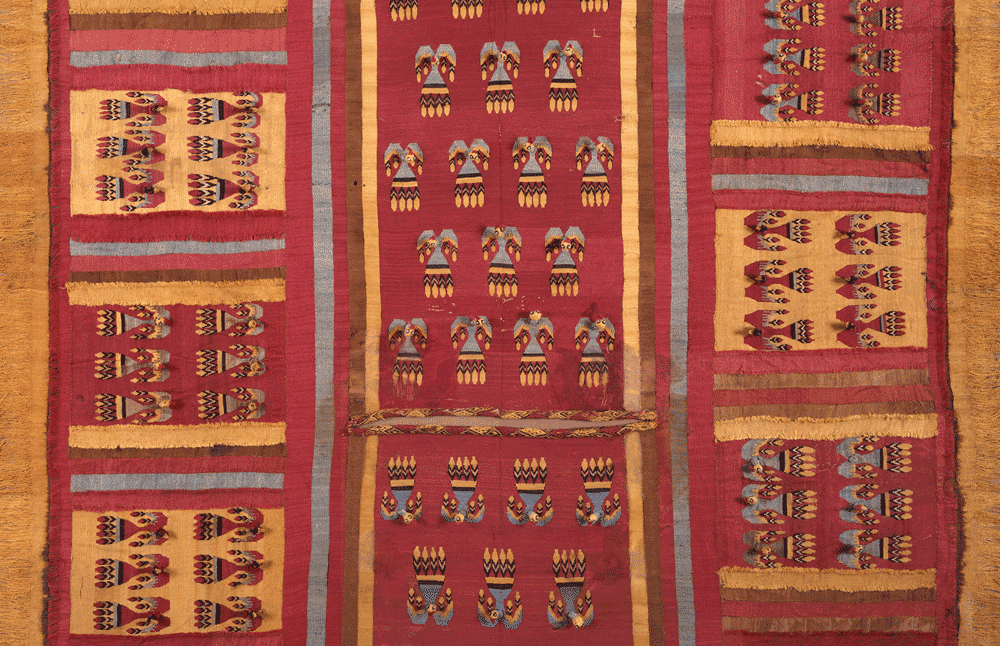|
Jorge Choquetarqui
Jorge Adalberto Choquetarqui Jahuircata (born 23 April 1968) is a Bolivian community organizer and politician who served as a party-list member of the Chamber of Deputies from La Paz from 2010 to 2015. Born and brought up in El Alto, Choquetarqui worked as a micro-business owner involved in several ventures, including textile manufacturing. He took an interest in the extensive network of community associations and organizations covering the city. He served on the neighborhood council of the 16 de Julio zone and assumed leadership positions on the school board at his primary school alma mater. Elected president of the El Alto Parents' Federation in 2006, Choquetarqui led the organization through 2010. The sector's alignment with the government of Evo Morales cleared the path for his election to the Chamber of Deputies on the Movement for Socialism ticket in 2009. His organization's decision to put forward new representatives in 2014 meant he was not nominated for reelection. ... [...More Info...] [...Related Items...] OR: [Wikipedia] [Google] [Baidu] [Amazon] |
Chamber Of Deputies (Bolivia)
The Chamber of Deputies () is the lower house of the Plurinational Legislative Assembly of Bolivia. The composition and powers of this house are established in the Political Constitution of the State. The session room is located in the Legislative Palace building in Plaza Murillo. Deputies Deputies serve five-year terms, and must be aged at least 25 on the day of the election. Electoral system The Chamber of Deputies comprises 130 seats (including the seven special seats), elected using a seat linkage based mixed compensatory system using a two votes: 63 deputies are elected by first-preference plurality to represent single-member electoral districts, 60 are elected by closed list party-list proportional representation from party lists on a departmental basis (in districts of varying sizes corresponding to Bolivia's nine departments with a threshold of 3%). The list seats in each region are awarded proportionally based on the vote for the presidential candidates, subtra ... [...More Info...] [...Related Items...] OR: [Wikipedia] [Google] [Baidu] [Amazon] |
Evo Morales
Juan Evo Morales Ayma (; born 26 October 1959) is a Bolivian politician, trade union organizer, and former cocalero activist who served as the 65th president of Bolivia from 2006 to 2019. Widely regarded as the country's first president to come from its indigenous population, his administration worked towards the implementation of left-wing policies, focusing on the legal protections and socioeconomic conditions of Bolivia's previously marginalized indigenous population and combating the political influence of the United States and resource-extracting multinational corporations. Ideologically a socialist, he led the Movement for Socialism (MAS) party from 1998 to 2024. Born to an Aymara family of subsistence farmers in Isallawi, Orinoca Canton, Morales undertook a basic education and mandatory military service before moving to the Chapare Province in 1978. Growing coca and becoming a trade unionist, he rose to prominence in the '' campesino'' ("rural laborers") union. I ... [...More Info...] [...Related Items...] OR: [Wikipedia] [Google] [Baidu] [Amazon] |
Board Of Education
A board of education, school committee or school board is the board of directors or board of trustees of a school, local school district or an equivalent institution. The elected council determines the educational policy in a small regional area, such as a city, county, state, or province. Frequently, a board of directors power with a larger institution, such as a higher government's department of education. The name of such board is also often used to refer to the school system under such board's control. The government department that administered education in the United Kingdom Education in the United Kingdom is a devolved matter, with each of the countries of the United Kingdom having separate systems under separate governments. The UK Government is responsible for England, whilst the Scottish Government, the Welsh ... before the foundation of the Ministry of Education was formerly called the Board of Education. Boards of education serve as crucial pillars in the ar ... [...More Info...] [...Related Items...] OR: [Wikipedia] [Google] [Baidu] [Amazon] |
Spanish Language
Spanish () or Castilian () is a Romance languages, Romance language of the Indo-European languages, Indo-European language family that evolved from the Vulgar Latin spoken on the Iberian Peninsula of Europe. Today, it is a world language, global language with 483 million native speakers, mainly in the Americas and Spain, and about 558 million speakers total, including second-language speakers. Spanish is the official language of List of countries where Spanish is an official language, 20 countries, as well as one of the Official languages of the United Nations, six official languages of the United Nations. Spanish is the world's list of languages by number of native speakers, second-most spoken native language after Mandarin Chinese; the world's list of languages by total number of speakers, fourth-most spoken language overall after English language, English, Mandarin Chinese, and Hindustani language, Hindustani (Hindi-Urdu); and the world's most widely spoken Romance language ... [...More Info...] [...Related Items...] OR: [Wikipedia] [Google] [Baidu] [Amazon] |
Education In Bolivia
Education in Bolivia, as in many other areas of Bolivian life, has a divide between Bolivia's ''rural'' and urban areas. Rural illiteracy levels remain high, even as the rest of the country becomes increasingly literate. Bolivia devotes 23% of its annual budget to educational expenditures, a higher percentage than in most other South American countries, albeit from a smaller national budget. A comprehensive, education reform has made some significant changes. Initiated in 1994, the reform decentralized educational funding in order to meet diverse local needs, improved teacher training and curricula, formalized and expanded intercultural bilingual education and changed the school grade system. Resistance from teachers’ unions, however, has slowed implementation of some of the intended reforms. The Human Rights Measurement Initiative (HRMI) finds that Bolivia is fulfilling only 83.2% of what it should be fulfilling for the right to education based on the country's level of income. ... [...More Info...] [...Related Items...] OR: [Wikipedia] [Google] [Baidu] [Amazon] |
Minibus
A minibus, microbus, or minicoach is a passenger-carrying motor vehicle that is designed to carry more people than a multi-purpose vehicle or minivan, but fewer people than a full-size bus. In the United Kingdom, the word "minibus" is used to describe any full-sized passenger-carrying van or panel truck. Minibuses have a seating capacity of between 12 and 30. Larger minibuses may be called midibuses. Minibuses are typically front-engine step-in vehicles, although low floor minibuses are particularly common in Japan. History It is unknown when the first minibus vehicle was developed. For example, Ford Model T vehicles were modified for passenger transport by early bus companies and entrepreneurs. Ford produced a version during the 1920s to carry up to twelve people. In the Soviet Union, the production of minibuses began in the mid-1950s, among the first mass-produced minibuses were the RAF-10, UAZ-451B, and Start. Since September 1961, the RAF-977D "Latvia" minibus ... [...More Info...] [...Related Items...] OR: [Wikipedia] [Google] [Baidu] [Amazon] |
Share Taxi
A share taxi, shared taxi, taxibus, or jitney or dollar van in the US, or marshrutka in former Soviet countries, is a mode of transport which falls between a taxicab and a bus. Share taxis are a form of paratransit. They are vehicles for hire and are typically smaller than buses. Share taxis usually take passengers on a fixed or semi-fixed route without timetables, sometimes only departing when all seats are filled. They may stop anywhere to pick up or drop off their passengers. They are most common in developing countries and inner cities. The vehicles used as share taxis range from four-seat cars to minibuses, midibuses, covered pickup trucks, station wagons, and trucks. Certain vehicle types may be better-suited than others. They are often owner-operated. An increase in bus fares usually leads to a significant rise in usage of share taxis. Liberalization is often encouraged by Libertarianism, libertarian urban economists, such as Richard Allen Epstein of the University of Chic ... [...More Info...] [...Related Items...] OR: [Wikipedia] [Google] [Baidu] [Amazon] |
Motorcycle
A motorcycle (motorbike, bike; uni (if one-wheeled); trike (if three-wheeled); quad (if four-wheeled)) is a lightweight private 1-to-2 passenger personal motor vehicle Steering, steered by a Motorcycle handlebar, handlebar from a saddle-style seat. Motorcycle designs vary greatly to suit a range of different purposes: Long-distance motorcycle riding, long-distance travel, Motorcycle commuting, commuting, cruising (driving), cruising, Motorcycle sport, sport (including Motorcycle racing, racing), and Off-roading, off-road riding. Motorcycling is riding a motorcycle and being involved in other related social activities such as joining a motorcycle club and attending motorcycle rally, motorcycle rallies. The 1885 Daimler Reitwagen made by Gottlieb Daimler and Wilhelm Maybach in Germany was the first internal combustion, petroleum-fueled motorcycle. In 1894, Hildebrand & Wolfmüller became the first series production motorcycle. Globally, motorcycles are comparable numerically t ... [...More Info...] [...Related Items...] OR: [Wikipedia] [Google] [Baidu] [Amazon] |
Andean Textiles
The Andean textile tradition spanned from the Pre-Columbian to the Colonial era throughout the western coast of South America, but was mainly concentrated in what is now Peru. The arid desert conditions along the coast of Peru have allowed for the preservation of these dyed textiles, which can date to 6000 years old. Many of the surviving textile samples were from funerary bundles, however, these textiles also encompassed a variety of functions. These functions included the use of woven textiles for ceremonial clothing or cloth armorLechtman, Heather. "Technologies of Power: The Andean Case." In ''Configurations of Power: Holistic Anthropology in Theory and Practice'', ed. John S. Henderson and Patricia J. Netherly, 254. Ithaca, NY: Cornell University Press, 1993. as well as knotted fibers for record-keeping. The textile arts were instrumental in political negotiations, and were used as diplomatic tools that were exchanged between groups. Textiles were also used to communicate we ... [...More Info...] [...Related Items...] OR: [Wikipedia] [Google] [Baidu] [Amazon] |
Communication Studies
Communication studies (or communication science) is an academic discipline that deals with processes of human communication and behavior, patterns of communication in interpersonal relationships, social interactions and communication in different cultures. Communication is commonly defined as giving, receiving or exchanging ideas, information, signals or messages through appropriate media, enabling individuals or groups to persuade, to seek information, to give information or to express emotions effectively. Communication studies is a social science that uses various methods of empirical investigation and critical analysis to develop a body of knowledge that encompasses a range of topics, from face-to-face conversation at a level of individual agency and interaction to social and cultural communication systems at a macro level. Scholarly communication theorists focus primarily on refining the theoretical understanding of communication, examining statistics in order to help ... [...More Info...] [...Related Items...] OR: [Wikipedia] [Google] [Baidu] [Amazon] |
State School
A state school, public school, or government school is a primary school, primary or secondary school that educates all students without charge. They are funded in whole or in part by taxation and operated by the government of the state. State-funded schools are global with each country showcasing distinct structures and curricula. Government-funded education spans from primary to secondary levels, covering ages 4 to 18. Alternatives to this system include homeschooling, Private school, private schools, Charter school, charter schools, and other educational options. By region and country Africa South Africa In South Africa, a state school or government school refers to a school that is state-controlled. These are officially called public schools according to the South African Schools Act of 1996, but it is a term that is not used colloquially. The Act recognised two categories of schools: public and independent. Independent schools include all private schools and schools t ... [...More Info...] [...Related Items...] OR: [Wikipedia] [Google] [Baidu] [Amazon] |








